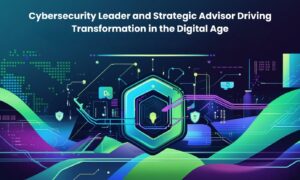In an era dominated by digital transformation, the importance of robust cybersecurity measures cannot be overstated. Cyber threats are constantly evolving, making it imperative for businesses to adopt effective frameworks that provide comprehensive protection. In this blog post, we will delve into the comparison of popular cybersecurity frameworks, helping you make an informed decision about which one best suits the unique needs of your business.
Understanding Cybersecurity Frameworks
Cybersecurity frameworks are structured guidelines and best practices designed to safeguard an organization’s information systems and data. They serve as a roadmap for implementing security measures, managing risks, and ensuring compliance with industry standards. Here, we will compare three widely adopted cybersecurity frameworks: NIST Cybersecurity Framework, ISO/IEC 27001, and CIS Controls.
NIST Cybersecurity Framework
- Core Functions
Identify: This phase involves understanding and managing cybersecurity risks to systems, assets, data, and capabilities.
Protect: Implement safeguards to ensure the delivery of critical infrastructure services and manage the risk of cybersecurity events.
Detect: Develop and implement activities to detect the occurrence of a cybersecurity event.
Respond: Take action regarding a detected cybersecurity incident.
Recover: Restore any capabilities or services that were impaired due to a cybersecurity incident.
- Flexibility and Adaptability
NIST’s framework is designed to be adaptable to various industries, allowing organizations to customize their cybersecurity strategies based on specific needs and risk profiles.
It provides a common language for organizations to communicate internally and externally about cybersecurity risk management.
- Risk Management
NIST places a strong emphasis on risk management, ensuring that organizations continually assess and prioritize risks while tailoring their cybersecurity efforts accordingly.
ISO/IEC 27001
- Information Security Management System (ISMS)
ISO/IEC 27001 centers around the establishment and maintenance of an ISMS, a systematic approach to managing sensitive information.
It involves a cycle of planning, implementing, monitoring, and continually improving the information security processes.
- International Recognition
ISO/IEC 27001 is an internationally recognized standard, providing businesses with a globally accepted framework for information security management.
- Comprehensive Risk Management
The framework’s risk assessment and treatment process is comprehensive, ensuring that organizations identify and mitigate risks effectively.
CIS Controls
- Practical and Actionable Controls
CIS Controls provide a set of specific actions that organizations can take to enhance their cybersecurity posture.
These controls are practical, making them accessible for implementation by organizations of varying sizes.
- Clear Guidance for Implementation
The framework offers clear and concise guidance on implementing each control, making it easier for organizations to follow and adopt cybersecurity best practices.
- Scalability
CIS Controls are scalable, allowing organizations to prioritize and implement controls based on their specific needs, resources, and risk factors.
Choosing the Right Framework
- Business Size and Complexity
Small and Medium-sized Enterprises (SMEs)
Smaller businesses may find that the simplicity and practicality of frameworks like CIS Controls are well-suited to their resources and needs.
A more streamlined approach may be preferable, focusing on essential controls to establish a foundational level of security.
Large Enterprises
Larger enterprises with complex IT infrastructures might lean towards frameworks like NIST or ISO/IEC 27001, which provide more comprehensive guidelines and allow for a tailored approach.
- Industry Compliance
Regulatory Requirements
Certain industries have specific regulatory standards. Ensure that the chosen framework aligns with these regulations to avoid legal and compliance issues.
ISO/IEC 27001, being an internationally recognized standard, often aligns well with various regulatory frameworks.
- Resource Availability
Budget Considerations
Evaluate your organization’s budget for cybersecurity initiatives. NIST, for instance, may require a significant investment, both in terms of time and financial resources.
CIS Controls, with their practical approach, can be more cost-effective for organizations with limited resources.
Manpower and Technical Capabilities
Assess the availability of skilled personnel and technical capabilities within your organization. Some frameworks may demand a higher level of expertise for implementation and maintenance.
- Risk Tolerance
Risk Management Focus
Consider your organization’s risk tolerance. If meticulous risk management is a top priority, ISO/IEC 27001, with its detailed risk assessment and treatment processes, might be a suitable choice.
NIST also places a strong emphasis on risk management, providing a structured approach to identify, assess, and mitigate risks.
- International Presence
Global Operations
If your business operates on an international scale, the global recognition of ISO/IEC 27001 can be advantageous.
NIST, while developed in the United States, is widely acknowledged and utilized internationally, providing a framework that aligns with global cybersecurity best practices.
- Scalability
Adaptability to Growth
Choose a framework that is scalable and adaptable to your business’s growth. CIS Controls, with their modular structure, can be scaled based on organizational size and evolving cybersecurity needs.
- Integration with Existing Processes
Seamless Integration
Consider how well the chosen framework integrates with your existing business processes. A framework that aligns with your organization’s goals and operations will be more readily accepted and effectively implemented.
- Long-term Sustainability
Continual Improvement
Look for a framework that encourages a culture of continual improvement. Regular reviews and updates to your cybersecurity strategy are essential to staying resilient against emerging threats.
Conclusion
The choice of a cybersecurity framework is a critical decision that requires careful evaluation of your organization’s unique needs and priorities. Whether you opt for the flexibility of NIST, the international recognition of ISO/IEC 27001, or the practicality of CIS Controls, the key is to implement a framework that aligns with your business goals and enhances your cybersecurity resilience. Regular reviews and updates to your cybersecurity strategy will ensure that your organization stays ahead of evolving cyber threats in an ever-changing digital landscape.



































